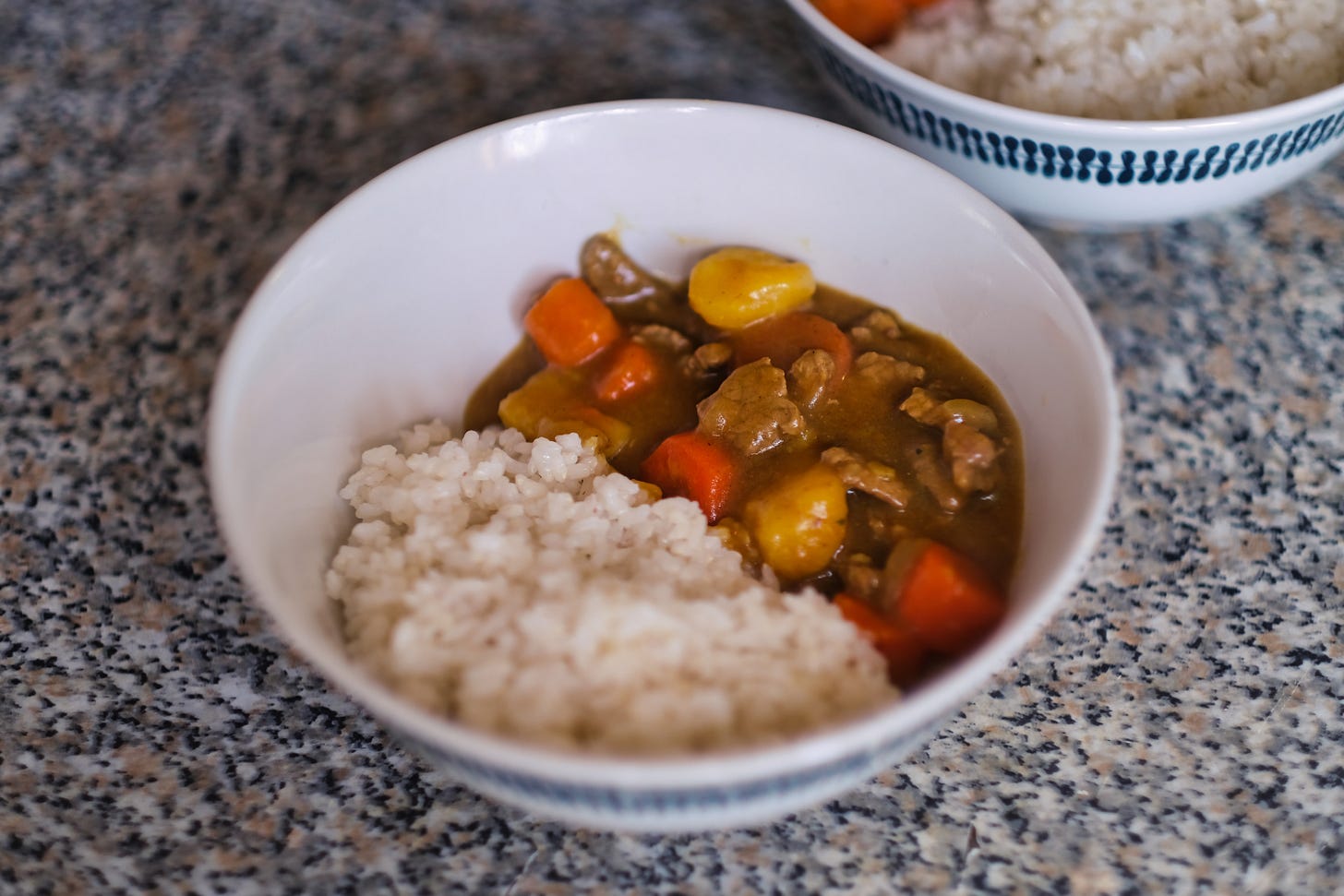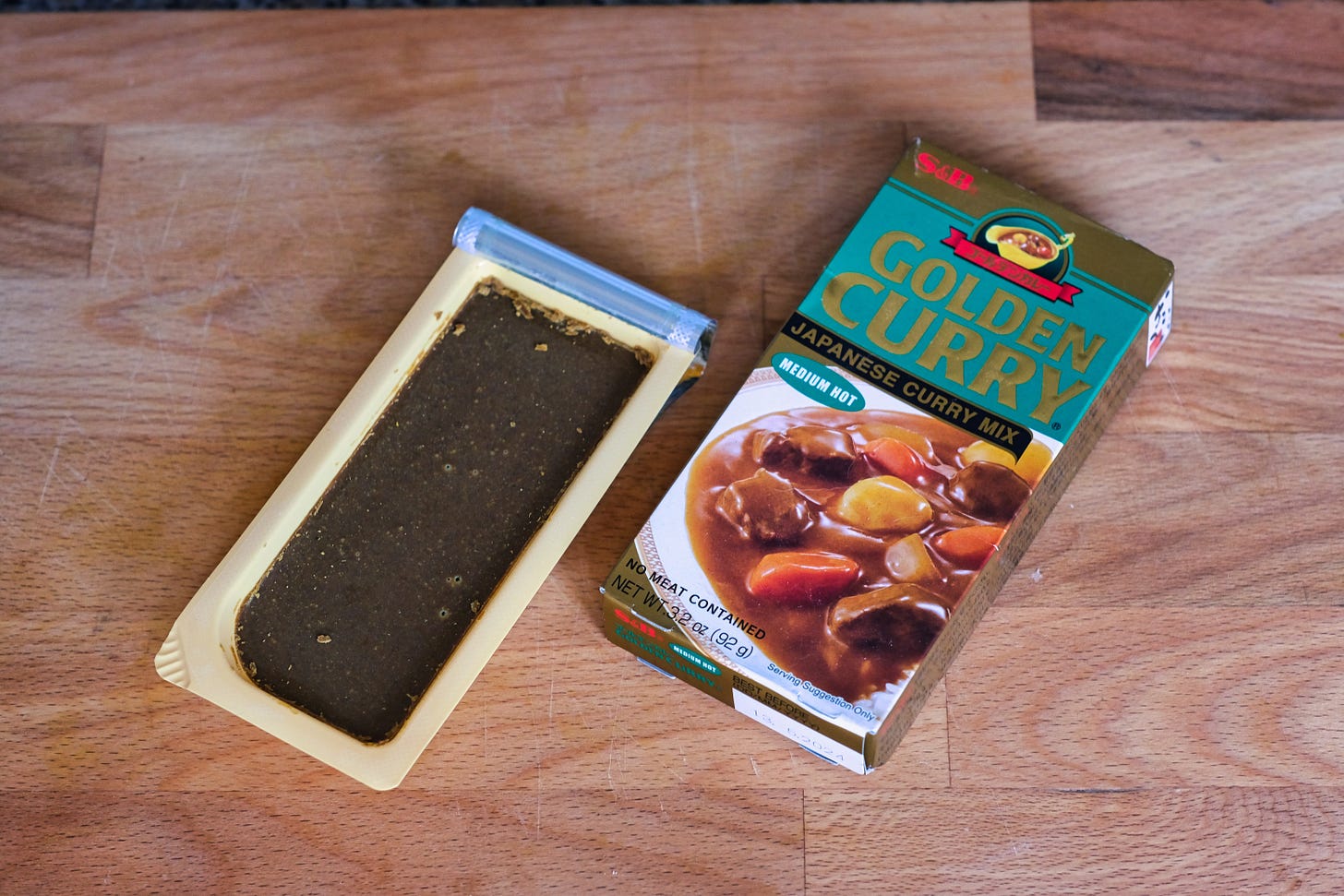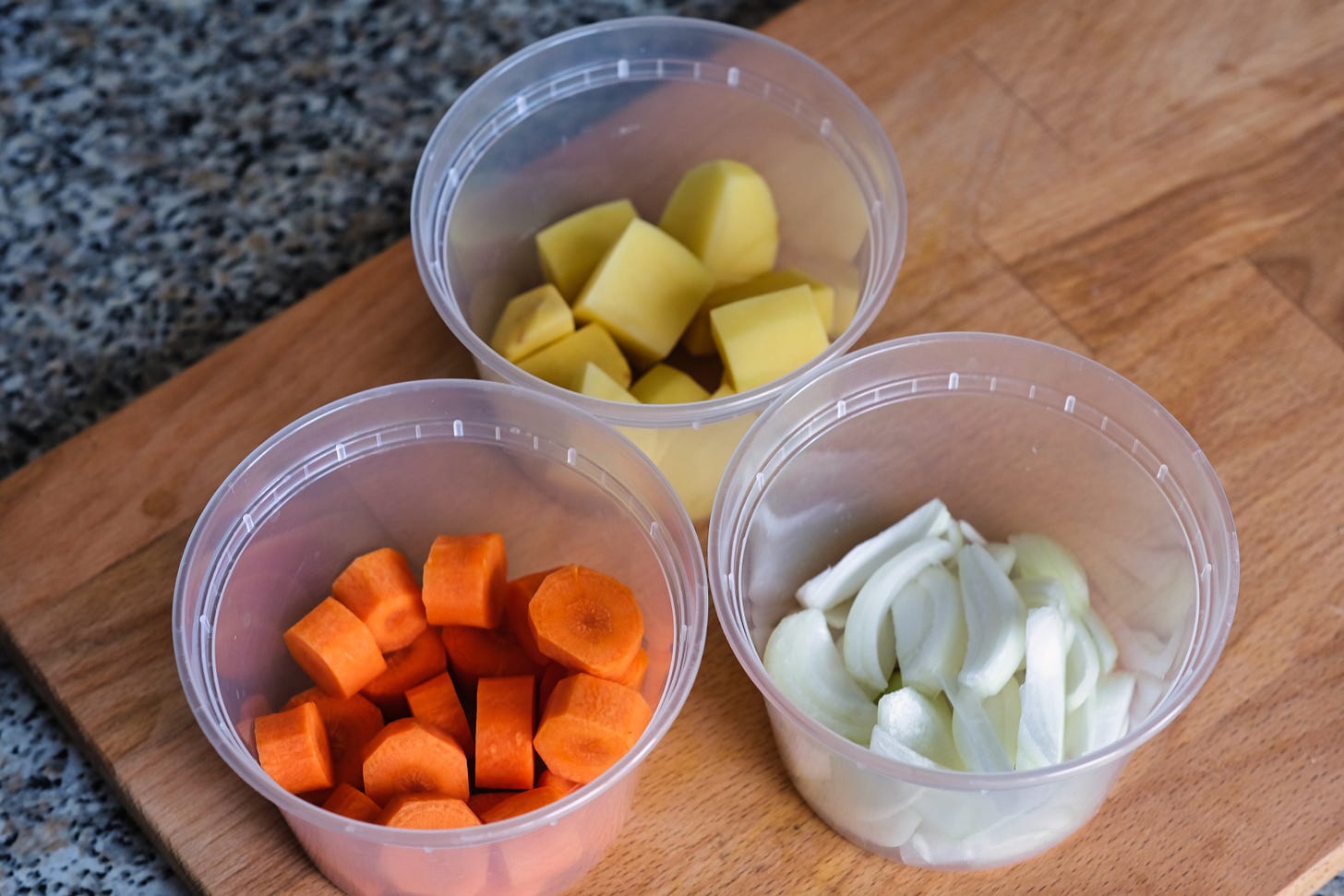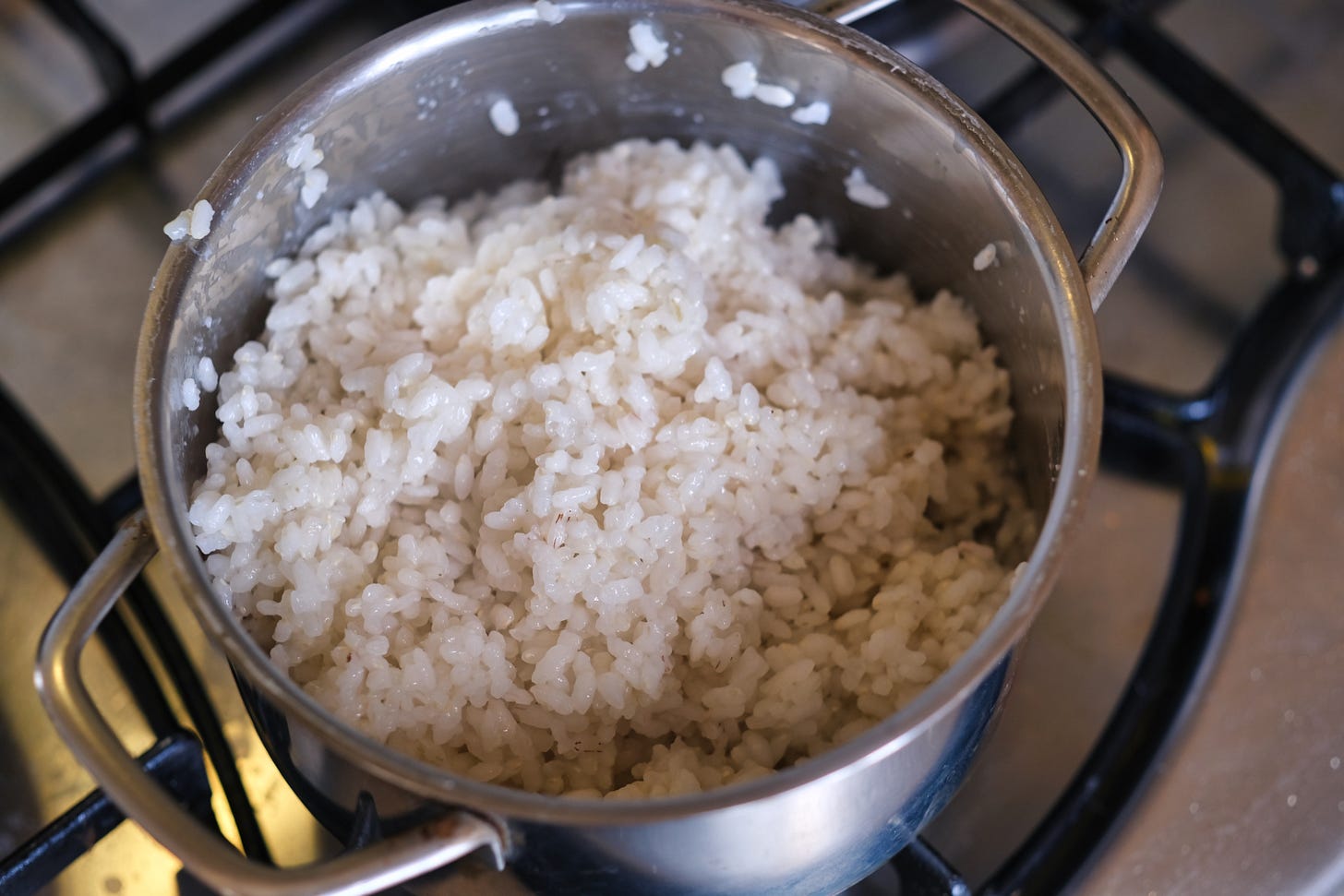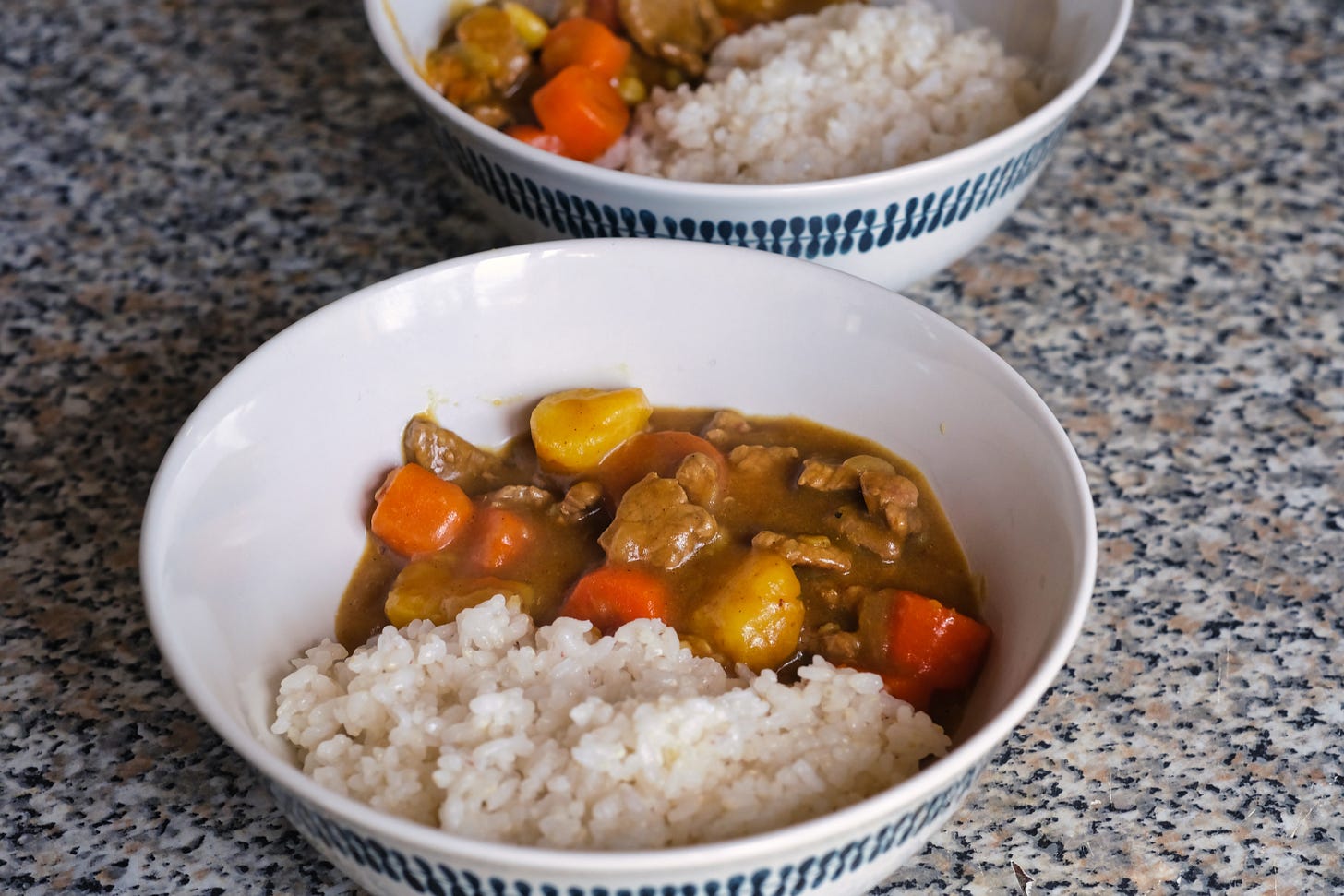If you’re not yet a subscriber and like The Ramen Bowl, leave your email to start receiving all the new posts directly in your inbox! 👇
What even is Japanese Curry?
We’re all used to the South Asia yellowish powdered spices mix.
While curry is often associated with Indian cuisine, really many regions of South and East Asia developed different kinds of curries and specific dishes in which it is used.
It was only around the second half of 1800 that curry was introduced in Japan by the British and started developing as a Yoshoku (Western dish).
Interestingly enough, many internationally well-known Japanese dishes actually happen to be yoshoku, including omurice, sando (like my version of the Tamago Sando), korokke, and katsu (fried cutlet).
Japanese Curry is most often prepared as a stew served over plain white rice as Kare Reisu (literally, curry rice), though you might have heard of the pretty famous Katsu Curry.
There are two main differences between Japanese curry and other curries.
First off, Japanese curry mixes tend to be milder. While many curries can be considered hot (even really hot), Japanese ones make use of lighter spices overall. Most curry blocks, pastes, or powders will often be proposed in three variations: mild, medium, or hot. Even the “hot” versions are somewhat not hot enough compared with the majority of the other curries.
The second distinctiveness is that Japanese curry implies a roux. For those who are not familiar, a roux is a basic preparation of fat and flour used to thicken sauces. As a reference, it is the base of Bechamel sauce. Unlike other curry mixes, Japanese curries nearly always implicitly involve the use of a roux to develop the curry stew.
Blocks and Powders
And paste, actually. Japanese curry can be found in these three forms.
The less spread format is the paste, so we won’t dwell on this.
Powders are doubtless the most common form in which we are used to see curry, but they are not leading in Japan. Even though it is fairly simple to portion powdered spices, they require some extra steps to be incorporated into the final dish, starting from the in-house creation of the base roux.
Curry blocks, on the other hand, are a practical and convenient form, as they already include the roux in the mix. The preparation is almost instant: just throw in a couple of blocks in the stew and stir to dissolve, watching it beautifully turn everything into a creamy spicy sauce.
Blocks were developed in the fifties by S&B Foods and became by then the de facto popular option to make Japanese curry at home. Also, they have an incredibly balanced flavor and they are highly available in Europe and the US, making it a perfect choice even for beginners approaching Japanese cuisine for the first time.
In this recipe, I will be using S&B Golden Curry block in its Medium Hot version (again, this shouldn’t come as a spoiler: it is actually pretty mild).
Recipe
Ingredients
The following indications abundantly serve 2 persons. If you need to make more (or less) simply multiply the ingredients quantity to get different servings!
As a base:
250 grams of short-grain Rice (upcoming post about Rice in The Pantry)
For the stew:
1 tbsp of vegetable oil
1 carrot, cut into bite-sized chunks
1 potato, cut into bite-sized chunks
Half an onion, sliced
250 g of beef meat, cut into bite-sized chunks
2 tabs of S&B Japanese Curry block
This recipe should be roughly the same even if you are not using this exact curry brand, but still using blocks. Eventually, simply follow the instructions printed on the box: most brands provide their steps to use the product at best. If you are using powdered or pasted curry, instead, you will need to separately create a simple roux (cook the same amount of butter and flour in a pan for a few minutes), incorporate the spices, and then mix it back in the stew. Again, adjust properly by following the vendor's instructions.
Preparation
The core point to keep in mind here is to cut everything into bite-sized pieces. You will not want to use a knife at all for eating this dish, nor have to divide pieces.
Slice the beef and onion into bite-sized pieces.
Peel and chop the rest of the veggies, again into bite-sized chunks.
Preheat a pot to medium-high heat for a minute.
Add the oil to the pot together with the veggies and the meat and stir fry for a couple of minutes, still at medium-high heat.
Add water to the pot. It should be enough to cover the food inside.
Bring the content to a boil, then reduce the heat to the minimum.
Cook for 30-60 mins at simmer. Cook for less time for less tender meat and a crunchier consistency of the veggies, or cook for longer times if dealing with tougher meat and if you prefer your vegetables softer. There’s no right or wrong, it’s all up to taste. I usually go for around 45 minutes.
While the stew is cooking, wash the rice with water until you notice that rinsing it the water comes out pretty clear. This usually takes around ~10 rinses for me.
Add the rice to a cold pot, distributing it evenly on the bottom, then add cold water to cover almost 1-2 centimeters above the rice level.
Cover the rice pot and steam it by bringing it to a boil, then immediately turn it to the lowest heat possible and cook for exactly 12 minutes.
If you want to skip points 8-9-10, buy yourself a rice cooker - ◡ -
Back to the curry. In the last few minutes of cooking, add the curry blocks in the stew pot and stir to dissolve, about one minute.
If you think the curry is too thick, simply add water. If it’s too runny, let it cook for a few more minutes.
Done! Serve a couple of scoops of steamed white rice with some Japanese curry stew on the side.
Notes and Storage
The Japanese curry stew can last for a couple of days refrigerated.
If you want to pump your Japanese Curry, here are two tips for bringing the dish above average:
Add a sweet note. Adding a hint of sweetness can improve your curry. Try adding some apple or some honey to the stew.
Use broth for a richer taste. Instead of plain water, I usually prefer adding a light broth at point 5 of the preparation. For a more Japanese-forward, umami, and slightly fishy take, you can try using a dashi, too.
Recommendation: Olympian Kitchen
At Olympian Kitchen by
, you'll learn how to gain more confidence in the kitchen through learning new cooking skills. Nicola's healthy recipes are engaging and meticulously descriptive: check out this Baby Artichoke post, it even has videos!— The Ramen Bowl - ◡ -
If you’re not yet a subscriber and like The Ramen Bowl, leave your email to start receiving all the new posts directly in your inbox! 👇






